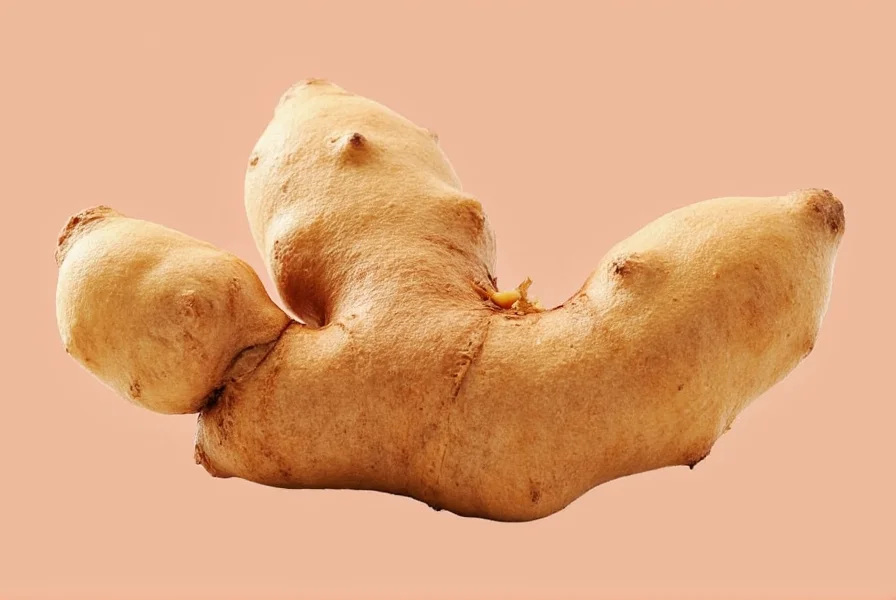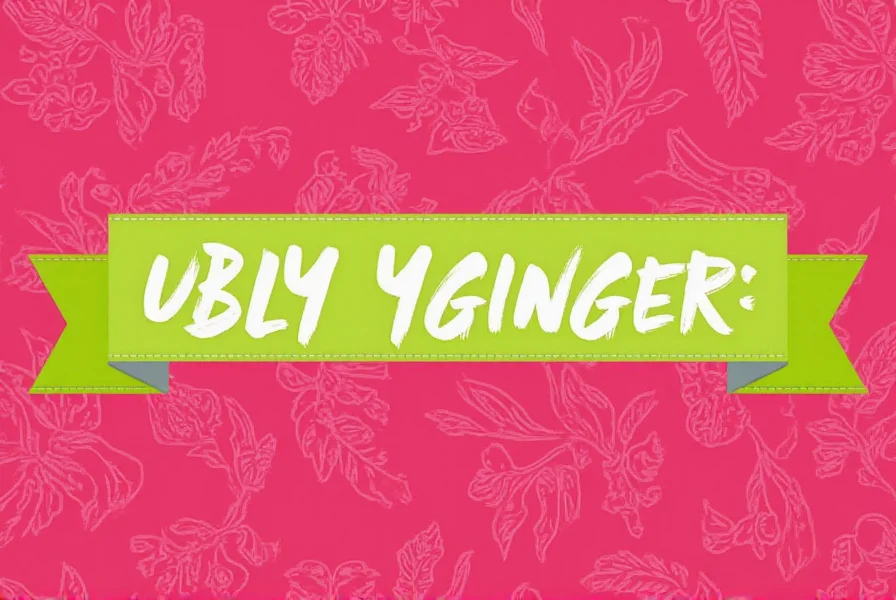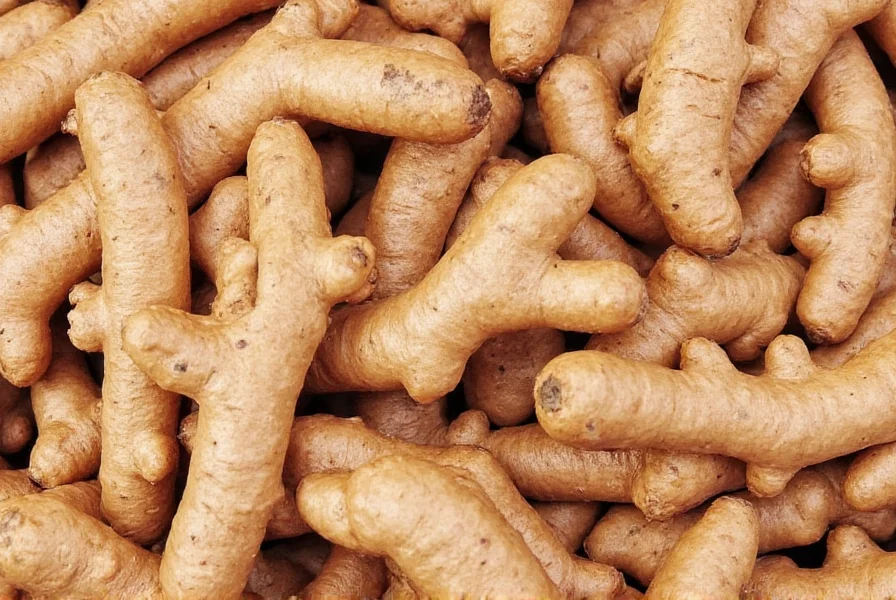Many home cooks mistakenly discard ginger that doesn't meet aesthetic standards, contributing to unnecessary food waste. The reality is that ginger's appearance often reflects its maturity and growing conditions rather than quality. Slightly wrinkled or knobby ginger frequently indicates older, more potent roots with concentrated flavor compounds. Understanding how to evaluate ginger beyond surface appearance helps maximize kitchen resources while reducing waste.
What Makes Ginger "Ugly"?
Ginger root develops various "imperfections" naturally during growth. These characteristics don't necessarily indicate spoilage:
| Appearance Trait | Natural Cause | Quality Indicator |
|---|---|---|
| Deep wrinkles | Natural dehydration as ginger matures | Often indicates concentrated flavor; still usable if firm |
| Irregular knobs | Growing conditions and soil composition | No impact on quality; purely aesthetic variation |
| Thin skin | Younger ginger harvested early | More tender but less intense flavor; requires refrigeration |
| Thick, fibrous skin | Mature ginger allowed to develop fully | Stronger flavor; better for long-term storage |
How to Determine If Ugly Ginger Is Still Good
Instead of judging ginger by appearance alone, use these practical assessment methods:
- Texture test: Firm ginger with slight give when squeezed remains usable. Discard only if mushy or brittle.
- Skin integrity: Surface mold can be scraped off; discard only if mold penetrates beneath skin.
- Aroma check: Fresh ginger maintains its characteristic spicy scent even when wrinkled.
- Color consistency: Brown or gray spots beneath skin indicate spoilage; uniform color suggests usability.
Ginger with moderate wrinkles often contains higher concentrations of gingerol—the compound responsible for ginger's health benefits and distinctive flavor—compared to plump, smooth supermarket varieties. This makes "ugly" ginger particularly valuable for medicinal applications and strong-flavored dishes.
Practical Selection and Storage Tips
When shopping for ginger, prioritize these factors over appearance:
- Choose roots with smooth, taut skin where possible, but don't reject slightly wrinkled specimens
- Select heavier pieces for their size, indicating higher moisture content
- Avoid ginger with visible soft spots or damp areas
- Store unpeeled ginger in a paper bag in the refrigerator's crisper drawer
- Freeze whole ginger roots for long-term storage without quality loss
For "ugly" ginger with pronounced wrinkles, simply peel away dry outer layers to reveal usable flesh beneath. Many professional chefs actually prefer slightly mature ginger for its intensified flavor profile in sauces, marinades, and baked goods.

Reducing Food Waste With Imperfect Ginger
Approximately 30% of edible ginger gets discarded due to cosmetic standards. You can maximize "ugly" ginger through these techniques:
- Grate wrinkled ginger directly into stir-fries or smoothies
- Simmer imperfect pieces in broths and soups for flavor infusion
- Create ginger syrup from less visually appealing sections
- Dehydrate thin slices for tea or spice blends
- Freeze grated ginger in ice cube trays for convenient future use
"Ugly" ginger often develops more complex flavor compounds as it matures. Chefs specializing in zero-waste cooking frequently seek out these imperfect roots for their superior taste intensity compared to conventionally attractive but younger ginger.

When Ginger Is Actually Bad
While appearance alone shouldn't determine usability, certain signs indicate ginger has spoiled:
- Excessive softness or mushiness throughout the root
- Pronounced mold growth beyond surface level
- Dark discoloration extending beneath the skin
- Foul or fermented odor
- Visible liquid seepage from the root
When in doubt, cut a small section to examine interior quality. Fresh ginger should reveal creamy white or yellow flesh with a clean, spicy aroma. Discard only if internal quality shows definitive spoilage signs.
Conclusion
"Ugly" ginger represents an opportunity rather than waste. By understanding how to properly assess, store, and utilize ginger beyond cosmetic standards, home cooks can reduce food waste while accessing potentially more flavorful and potent ingredients. The next time you encounter misshapen or wrinkled ginger at the market, remember that these characteristics often indicate maturity and concentrated flavor rather than diminished quality.
Is wrinkled ginger still good to use?
Yes, slightly wrinkled ginger is typically still good to use. Wrinkles often indicate mature ginger with concentrated flavor compounds. As long as the ginger remains firm when squeezed and shows no signs of mold or soft spots, it's perfectly usable. Simply peel away any excessively dry outer layers before use.
Can you eat ginger that has turned gray inside?
Gray discoloration inside ginger usually indicates spoilage and should not be consumed. Fresh ginger should have a consistent creamy white to pale yellow interior. If you notice gray or black spots penetrating beneath the skin, or if the ginger has a musty odor, it's best to discard it as these are signs of mold or decomposition.
How do you store ginger to prevent premature wrinkling?
Store unpeeled ginger in a paper bag in your refrigerator's crisper drawer. The paper bag absorbs excess moisture while maintaining humidity. Avoid plastic bags which trap moisture and accelerate spoilage. Properly stored, ginger can maintain quality for 3-4 weeks. For longer storage, freeze whole ginger roots and grate directly from frozen when needed.
Does ugly ginger have the same health benefits as regular ginger?
Yes, 'ugly' ginger typically contains equal or higher concentrations of beneficial compounds like gingerol compared to conventionally attractive ginger. Mature, slightly wrinkled ginger often has more potent anti-inflammatory and digestive properties. The health benefits remain intact regardless of surface appearance as long as the ginger hasn't spoiled.











 浙公网安备
33010002000092号
浙公网安备
33010002000092号 浙B2-20120091-4
浙B2-20120091-4